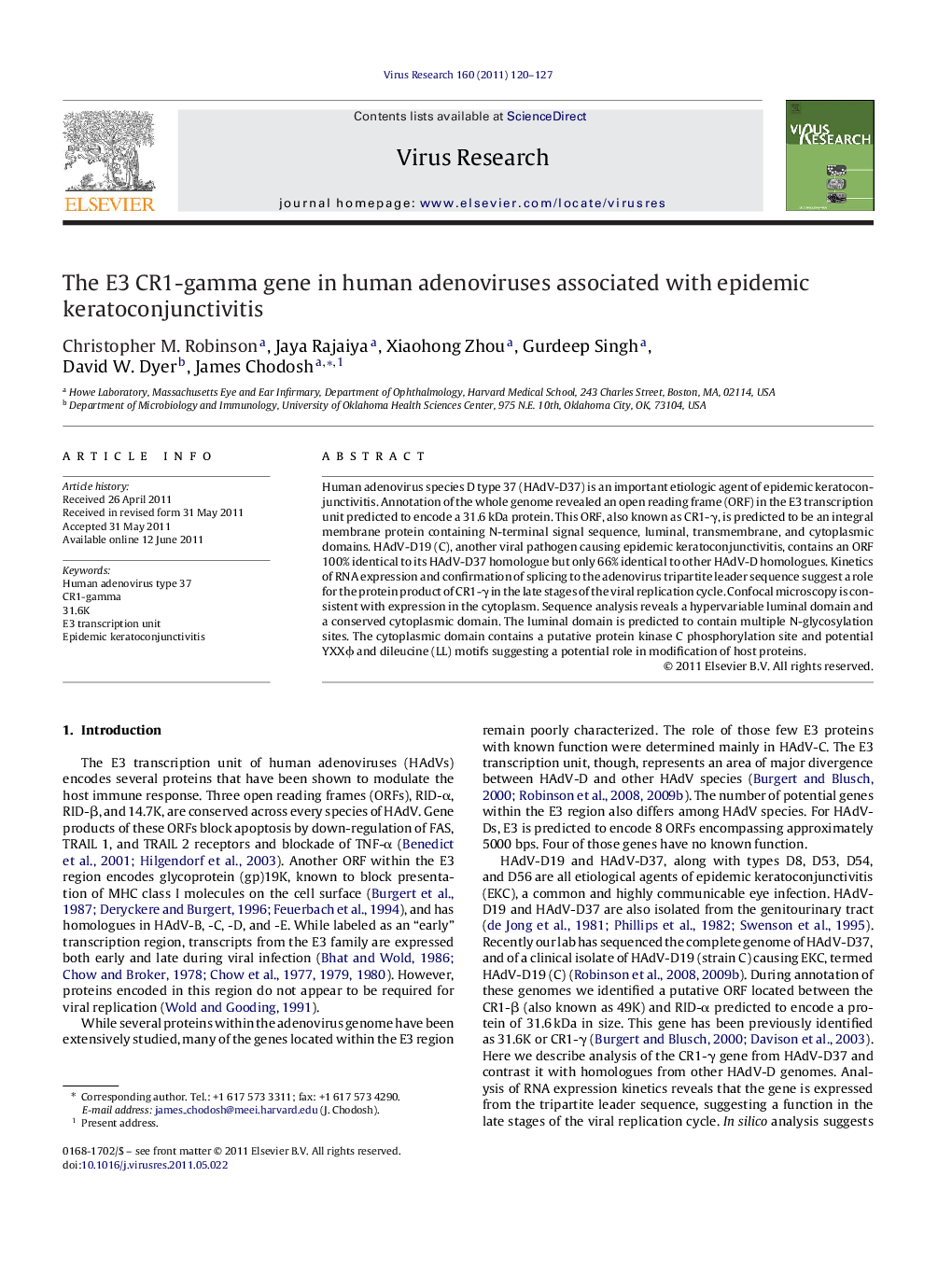| Article ID | Journal | Published Year | Pages | File Type |
|---|---|---|---|---|
| 6143353 | Virus Research | 2011 | 8 Pages |
Human adenovirus species D type 37 (HAdV-D37) is an important etiologic agent of epidemic keratoconjunctivitis. Annotation of the whole genome revealed an open reading frame (ORF) in the E3 transcription unit predicted to encode a 31.6 kDa protein. This ORF, also known as CR1-γ, is predicted to be an integral membrane protein containing N-terminal signal sequence, luminal, transmembrane, and cytoplasmic domains. HAdV-D19 (C), another viral pathogen causing epidemic keratoconjunctivitis, contains an ORF 100% identical to its HAdV-D37 homologue but only 66% identical to other HAdV-D homologues. Kinetics of RNA expression and confirmation of splicing to the adenovirus tripartite leader sequence suggest a role for the protein product of CR1-γ in the late stages of the viral replication cycle. Confocal microscopy is consistent with expression in the cytoplasm. Sequence analysis reveals a hypervariable luminal domain and a conserved cytoplasmic domain. The luminal domain is predicted to contain multiple N-glycosylation sites. The cytoplasmic domain contains a putative protein kinase C phosphorylation site and potential YXXÏ and dileucine (LL) motifs suggesting a potential role in modification of host proteins.
⺠Human adenovirus species D type 37 (HAdV-D37) is an important cause of eye disease. ⺠Annotation revealed an open reading frame, CR1-γ, in the E3 transcription unit. ⺠CR1-γ is predicted to be an integral membrane protein. ⺠RNA expression kinetics suggest a role in late stages of viral replication.
